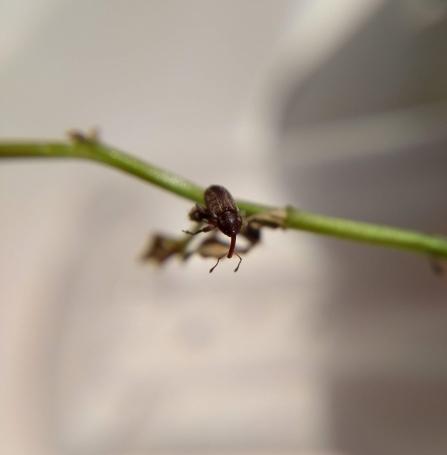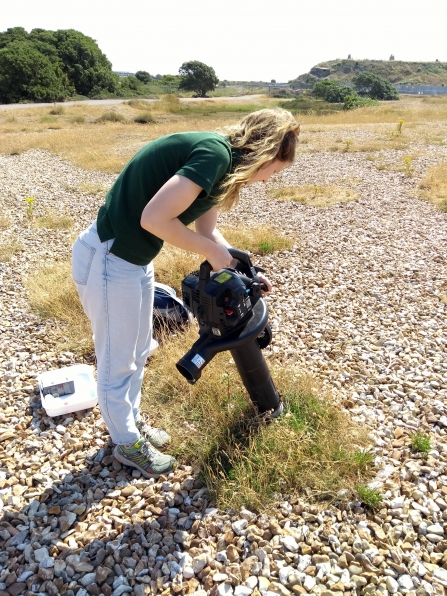The wildlife of the UK is some of the best studied in the world, thanks to a long tradition of amateur naturalists armed with pooters and sweep nets, yet despite this there are so many species that we know almost nothing about, even right on our doorstep. The Gilkicker weevil is one of these.
At first glance, the Gilkicker weevil is not much different to any other species of weevil. It’s about 4mm long, with a reddish-brown head and a cute bumbling walk. What makes it special is that, within the UK, it is only present at two sites: Browndown SSSI and Gilkicker Point (where it gets its name from!). This makes it a priority species for conservation in Hampshire, so it’s important that we know how the population is doing.



